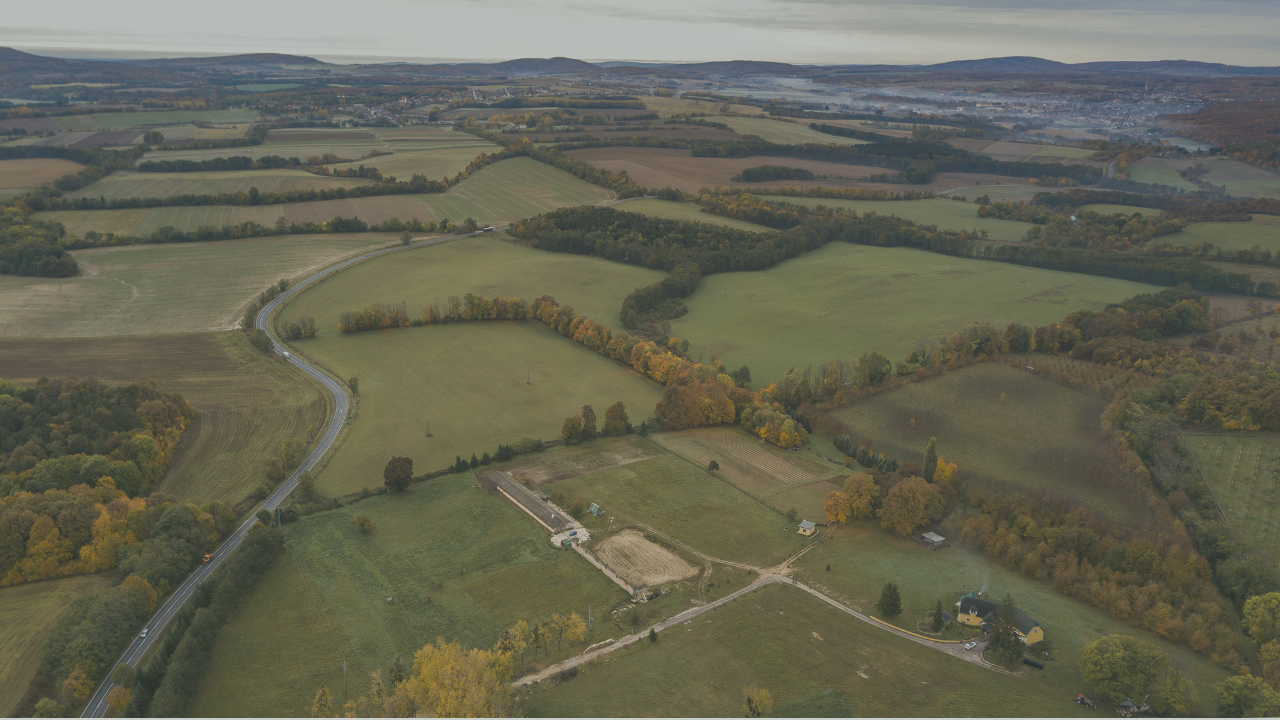
A Step-by-Step Guide for First-Time Buyers
How to Buy Land in Texas
Buying land in Texas can be one of the smartest investments you make—but if you’ve never done it before, it can feel overwhelming. From understanding financing options to navigating zoning restrictions, there’s a lot to consider before you can break ground on your dream home, start a ranch, or secure a long-term investment.
As an Austin-based realtor with experience helping clients purchase land throughout Central Texas, I’ve created this step-by-step guide to help first-time buyers understand how to buy land with confidence. Whether you're buying land for a custom home, recreational use, or future development, or a real estate investment, this guide will walk you through everything you need to know.
Why Buy Land in Texas?
Texas is a popular destination for land buyers for good reason. With no state income tax, a growing population, a strong economy, and a range of diverse landscapes—from Hill Country views to wooded acreage and open plains—there are opportunities for every type of buyer looking to own a piece of property.
In Central Texas specifically, areas surrounding Austin, Dripping Springs, Bastrop, Liberty Hill, and Georgetown offer beautiful land options in rural areas with proximity to city conveniences.
Step 1: Define Your Land-Buying Goals
Before you even begin browsing potential properties, get clear on what you want to do with the land. The intended use will shape nearly every part of the process.
Ask yourself:
-
Do you want to build a home now or in the future?
-
Is this land for farming, ranching, or recreational land?
-
Are you looking to develop or subdivide the property later?
-
Do you need utilities and road access, or are you okay with raw, undeveloped land?
Having a clear vision will help you find land that fits your goals and avoids costly mistakes later.
Step 2: Understand the Costs of Buying Land
Unlike buying a home, purchasing land comes with unique costs and considerations:
-
Down payment: Land loans often require 15–25% down.
-
Survey and title fees: You’ll likely need a new survey and a title search to confirm legal ownership and boundaries.
-
Utilities and infrastructure: Raw land might need septic systems, water wells, electricity poles, or road access.
-
Property taxes: Rates vary depending on county and land use.
-
Development costs: If you plan to build, don’t forget permitting fees, site prep, and construction financing.
Knowing the full picture of costs before becoming the landowner ensures you stay within budget and avoid surprises.
Step 3: Secure Financing (or Plan for a Cash Purchase)
If you’re not buying with cash, you’ll need to explore land loan options, which differ from traditional home loans:
Types of land loans:
-
Raw land loan: For undeveloped land without utilities or road access. These carry higher interest rates and stricter terms.
-
Improved land loan: For land with some access to roads and utilities.
-
Lot loan: For residential lots in a platted subdivision, often with infrastructure in place.
-
Construction-to-permanent loan: Combines the financing of your land purchase and construction loan into one.
Tip: Work with a local lender familiar with Texas land transactions. They’ll understand county requirements, appraisals, and can help guide you through the loan process.
Step 4: Choose the Right Location
In Texas, location is everything. Before you fall in love with a scenic plot of land, consider:
-
Zoning and land use regulations: Can you legally build what you want? Each county has different rules.
-
Access and road maintenance: Is there legal access to the land? Is it a private or public road?
-
Water and septic options: Will you need to drill a well or install a septic tank?
-
Floodplain status: Check FEMA maps to see if the land sits in a flood-prone area or flood zone.
-
School districts and taxes: Especially important if you plan to build a home.
In Central Texas, land near towns like Marble Falls, Spicewood, and Driftwood can offer acreage with stunning views, while still being within driving distance of Austin.
Step 5: Work With a Local Realtor
Buying land or a rural property is very different from buying a house. Working with a local real estate agent who specializes in land sales is essential to ensuring that you are making a good investment.
A knowledgeable land agent can help you:
-
Evaluate the land’s value and negotiate purchase price and closing costs
-
Understand mineral rights and water rights
-
Coordinate surveys, soil testing, and inspections
-
Review deed restrictions, easements, property boundaries, and zoning laws
-
Recommend reputable lenders, attorneys, and contractors
They’ll also help you navigate the intricacies of Central Texas counties—each of which has its own development rules, water districts, and permitting processes.
Browse available land listings here.
Step 6: Do Your Due Diligence
Once you’ve found a property you’re interested in, it’s time for due diligence. This is where a great land agent really shines.
Here’s what to investigate before closing:
Survey
Make sure you have an up-to-date land survey showing clear boundaries and acreage. This helps prevent boundary disputes and confirms what you're buying.
Soil and Topography
Test the soil for septic suitability if you’re planning to build. Also consider slope, elevation, and drainage to avoid issues like erosion or flooding.
Water Access
Does the land have access to public water? If not, you’ll need to budget for a well. Some counties require specific permits or minimum lot sizes for drilling.
Utilities
Check if electricity is available nearby. Bringing in power lines to rural land can be costly, so it’s a key factor to consider.
Title Search and Restrictions
Ensure there are no liens, easements, or deed restrictions that limit what you can do with the land.
Zoning & Permitting
Double check zoning regulations and county permitting requirements. Even unincorporated land may have restrictions on building, subdividing, or commercial use.
Step 7: Make an Offer and Close
Once your due diligence checks out, you’re ready to make an offer. Your agent will help you craft a competitive offer that protects your interests.
After the offer is accepted:
-
Open escrow and submit your earnest money deposit.
-
Order a title search to confirm clear ownership.
-
Complete any final inspections or testing (e.g., soil or environmental).
-
Finalize financing and secure homeowner’s or title insurance.
-
Close at a title company, just like with a home purchase.
Congratulations—you now own land in Texas!
Bonus Tips for First-Time Land Buyers
-
Think long-term: Even if you're not building right away, choose land that supports future plans.
-
Don’t skip the survey: Even if the seller provides one, get it reviewed or updated.
-
Ask about ag exemptions: In rural Texas, agricultural use can reduce your property tax burden.
-
Drive the land: Walk or drive the entire property. Don’t rely on photos or aerial maps alone.
-
Connect with the county: Before buying, talk to the local development or planning office about your plans.
Ready to Buy Land in Texas?
The process of buying land may seem more complex than buying a house—but with the right guidance, it can be smooth and rewarding.
As an Austin-based realtor with deep knowledge of the Central Texas land market, I help buyers just like you navigate the process with confidence. Whether you’re looking for a peaceful retreat in the Hill Country or a build-ready lot near Austin, I can help you find the perfect piece of land for your goals.
Click here to explore available land listings in Central Texas
Need help getting started or have questions about a specific property?
Reach out anytime—I’d be honored to help you take the next step toward land ownership in Texas.





